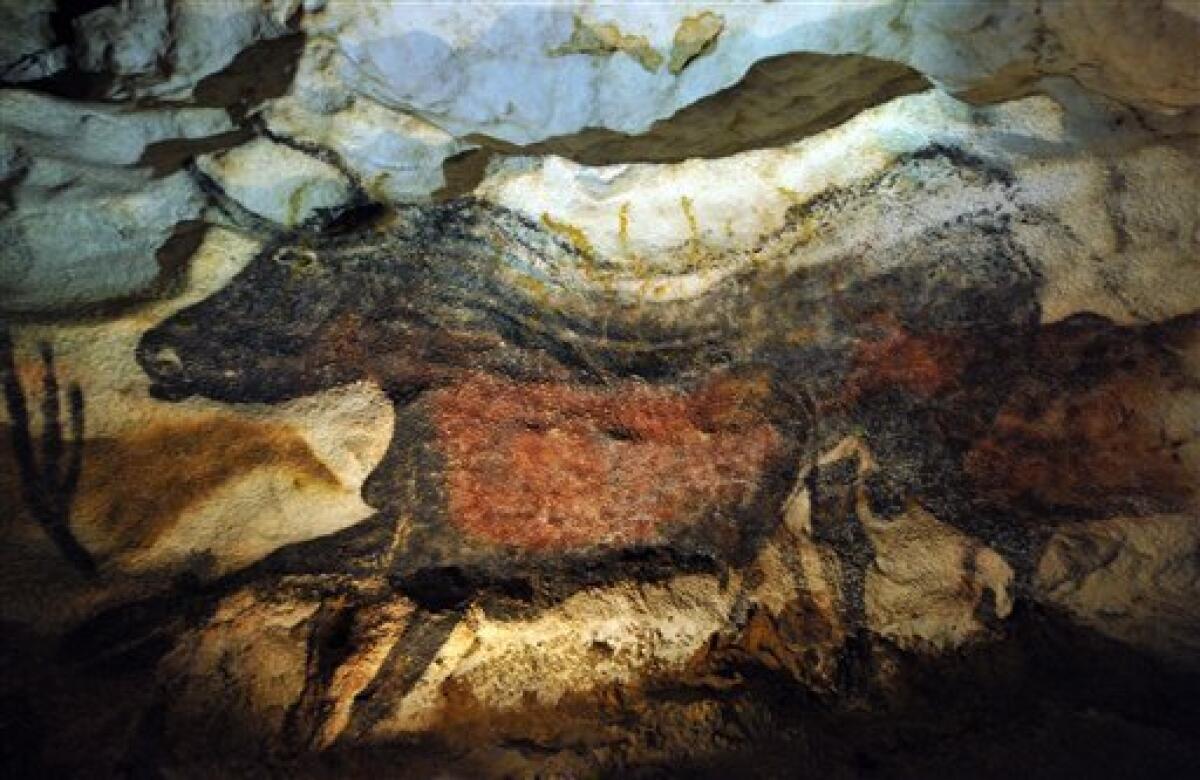Scientists meet to save Lascaux cave from fungus

Geologists, biologists and other scientists convened Thursday in Paris to discuss how to stop the spread of fungus stains – aggravated by global warming – that threaten France’s prehistoric Lascaux cave drawings.
Black stains have spread across the cave’s prehistoric murals of bulls, felines and other images, and scientists have been hard-pressed to halt the fungal creep.
Marc Gaulthier, who heads the Lascaux Caves International Scientific Committee, said the challenges facing the group are vast and global warming now poses an added problem.
“All of Lascaux’s problems have always been linked to the cave’s climatization, meaning the equilibrium of air inside the cave,” Gaulthier told reporters at a news conference before the symposium. Now, rising temperatures have complicated matters by stopping air from circulating inside the caverns, he said.
“It’s stagnating, immobile, frozen” inside the cave, he said.
This makes sending teams of scientists into the affected caverns risky, as their mere presence raises humidity levels and temperatures that could contribute to the growth of the different fungi, algae and bacteria that have attacked the cave over the years, he said.
Other factors behind the stains include the presence of naturally occurring microorganisms and the chemical makeup of the rock that forms the cavern walls, Gaulthier and other scientists at the news conference said.
For the moment, the cave is completely sealed in hopes that “it will heal itself,” Gaulthier said.
Two possible solutions to be examined at the conference include the installation of a system to regulate the cave’s temperature and the use of biocides, which kill the bacteria and have been used in the cave before, with mixed results.
Scientists from as far away as the United States, New Zealand and Japan were scheduled to attend the two-day symposium. The conclusions could also help preserve caves in Japan and Spain.
In 1963, Lascaux, a top tourist destination, was closed to the public after the appearance of green algae and other damage scientists linked to the visitors. A replica of the main Lascaux cavern was built nearby and has become a big tourist draw.
Carbon-dating suggests the murals were created between 15,000 and 17,500 years ago. Discovered in 1940, the cavern is a UNESCO World Heritage site.